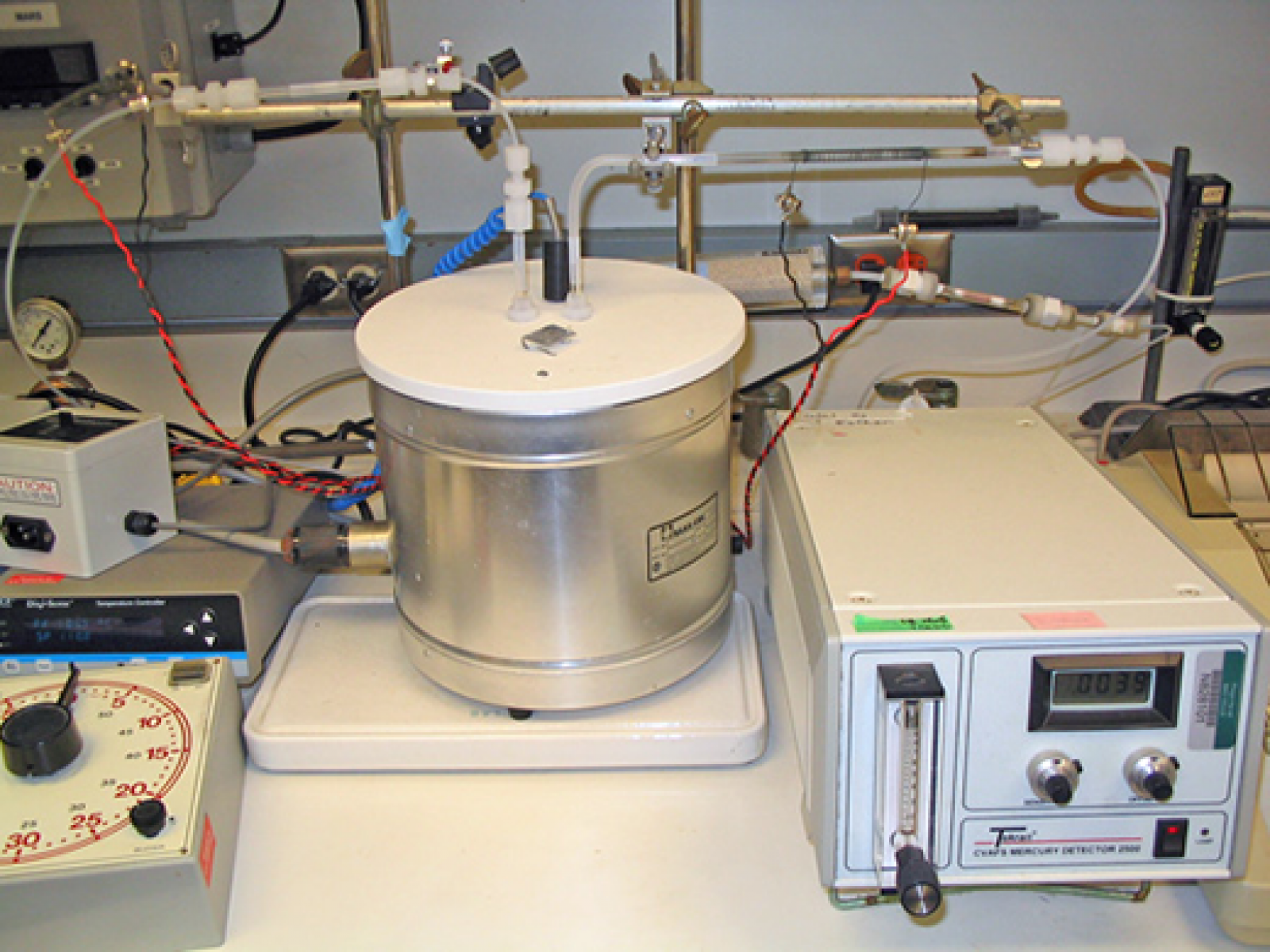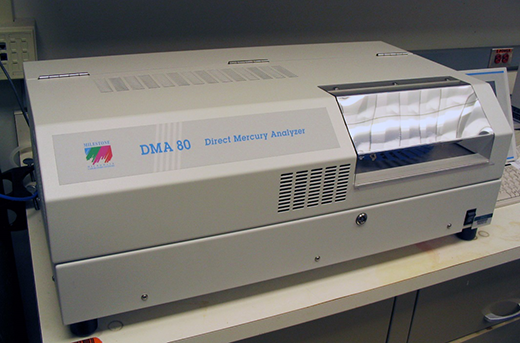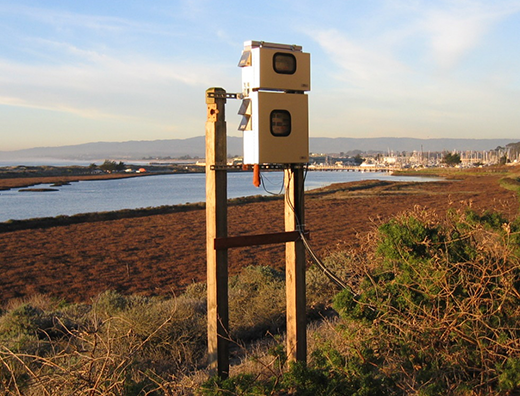Mercury Analytical Laboratory at PNNL-Sequim

Methylmercury separation is conducted using gas phase chromatography with detection by cold-vapor atomic fluorescence spectrometry.The Mercury Analytical Laboratory at MCRL conducts ultra-trace level measurements of both mercury and monomethyl mercury in sediments, water, and biological tissue.
The Mercury Analytical Laboratory is an internationally recognized for its unique ability to conduct ultra-trace level measurements of both mercury (Hg) and monomethyl mercury (MMHg) in sediments, water, biological tissue, and other matrices. The facility is housed at PNNL-Sequim. This lab can conduct mercury speciation measurements. Mercury analyses use both atomic fluorescence spectrometry and atomic absorption spectrometry. Mercury analyzers are also interfaced to inductively-coupled plasma mass spectrometers for isotopic studies.

